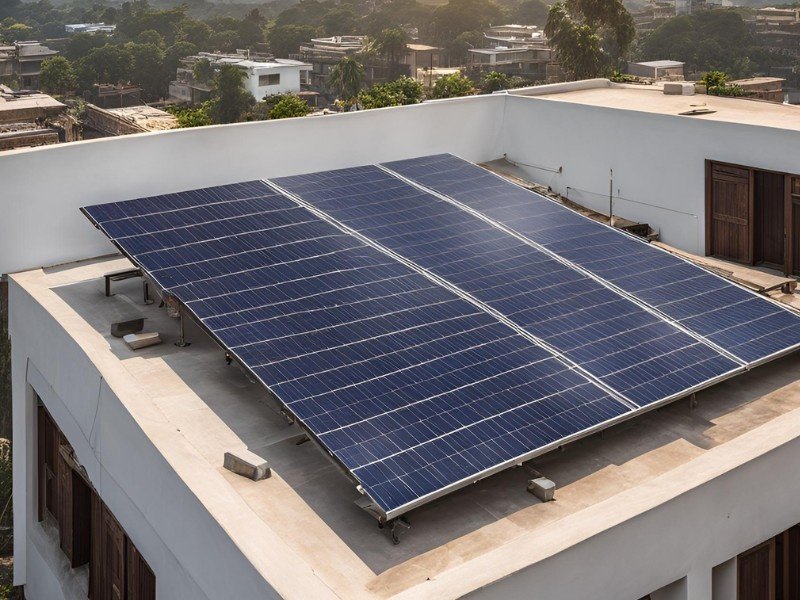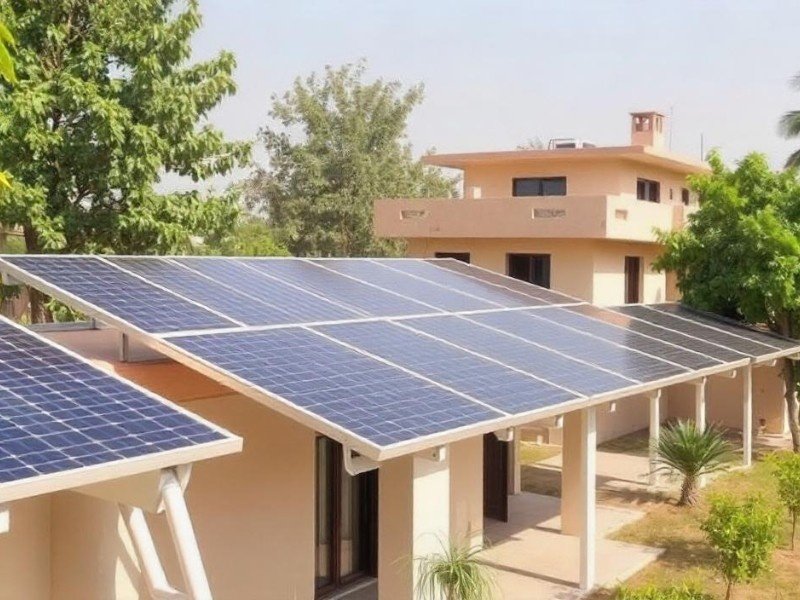With rising energy costs and a growing focus on environmental sustainability, many homeowners in Rajasthan are turning to solar energy. To promote this green initiative, the Rajasthan government, along with the central government, offers substantial subsidies to make solar systems affordable. In this blog, we will guide you through obtaining a home solar system subsidy in Rajasthan, helping you save money while contributing to a cleaner environment.
Introduction to Solar Subsidy in Rajasthan
The government of India, in collaboration with the Ministry of New and Renewable Energy (MNRE), has launched various schemes to support the adoption of solar energy in homes. Rajasthan, being one of the sunniest states in India, has immense potential for solar power generation. The Rajasthan Renewable Energy Corporation Limited (RRECL) is the nodal agency responsible for managing solar subsidies in the state.
The central government’s PM Surya Ghar: Muft Bijli Yojana provides solar subsidy benefits up to ₹95,000 for residential users. These solar systems help you use less regular electricity and come with money-saving benefits that reduce the setup cost, making solar power easier and more affordable for homes in 2025.
Benefits of Installing a Home Solar System
Before diving into the steps to avail of the subsidy, let us first understand the key benefits of installing a home solar system:
Now, let us move on to how you can avail yourself of the solar subsidy in Rajasthan.
Subsidy amount based on the power of your solar panels:
| System Capacity | Subsidy Amount |
|---|---|
| Up to 3 kW | Rs. 14,588 per kW |
| Up to 5kW | Rs. 11,670 per kW |
| For additional capacity up to 10kW | Rs. 7,294 per kW |
Step-by-Step Guide to Avail Home Solar System Subsidy in Rajasthan
1. Understand the Subsidy Scheme:
The central and state governments offer subsidies for residential rooftop solar systems. As per the MNRE guidelines, the subsidy is provided only for grid-connected rooftop solar systems.
The subsidy percentage varies based on the size of the solar system:
- Up to 3 kW: 40% subsidy on benchmark cost.
- Above 3 kW and up to 10 kW: 20% subsidy on the additional capacity.
- Above 10 kW: No subsidy for the excess capacity; subsidy is capped at 10 kW.
For example, if you install a 6 kW system, you will get a 40% subsidy for the first 3 kW and a 20% subsidy for the remaining 3 kW.
2. Eligibility Criteria for Solar Subsidy:
To qualify for the subsidy, certain eligibility criteria must be met:
- The solar system should be for residential use.
- The system must be grid-connected, meaning it is tied to the local electricity grid.
- Submit your application
3. Documents Required for Solar Subsidy in Rajasthan:
To apply for the solar subsidy, you will need the following documents:
- Proof of identity (Aadhar card, voter ID, etc.)
- Proof of residence (electricity bill, property tax receipt, etc.)
- Solar system purchase agreement or invoice
- Copy of the net metering application
- Photographs of the installed system
- Bank account details for subsidy transfer
Ensure that you have all these documents ready before applying to avoid any delays in the process.
4. Find an Approved Installer:
The Rajasthan government has empaneled several vendors to install solar systems under the subsidy scheme. These vendors are certified to ensure that the installation meets quality standards and guidelines. You can find a list of approved vendors on the RRECL website. Ensure that the vendor you choose is registered with the state nodal agency to avoid issues in claiming the subsidy.
5. Estimate the Cost and Savings
Before proceeding with the installation, it is essential to estimate the total cost of the system and the savings you will achieve through the subsidy. The cost will vary depending on the size of the solar system, the quality of equipment used (such as solar panels and inverters), and the installation charges.
On average, the benchmark cost for a 1 kW solar system in Rajasthan ranges between ₹40,000 to ₹48,000. After applying the subsidy, the cost significantly reduces, making solar energy a more economical option in the long term.
6. Apply for the Subsidy
Once you have selected an Approved Installer and finalized the size of the system, the next step is to apply for the subsidy. The application process generally involves the following steps
- The Approved Installer applies to the national solar portal or the RRECL (Rajasthan Renewable Energy Corporation Limited) portal, following which the approval process is initiated.
- You need to provide necessary documents such as proof of residence, electricity bills, and ID proof.
- The RRECL will review the application and approve the subsidy based on eligibility and compliance.
7. Installation of the Solar System
Once your subsidy application is approved, the vendor will begin installing the solar system at your home. Make sure that the installation follows the guidelines provided by the MNRE and RRECL to ensure safety and compliance.
8. Inspection and Commissioning
After installation, the system will undergo an inspection by the RRECL or a designated agency to ensure that it is properly installed and meets all the technical specifications. Once the inspection is complete, the system will be connected to the grid, and you can start generating solar power.
9. Receive the Subsidy Amount
Once the system is successfully commissioned and approved by the authorities, the subsidy amount will be credited to your account or adjusted against the total cost of the system, depending on the vendor’s payment terms and the state’s policy for giving the subsidy.
In Rajasthan, the subsidy for solar installations is offered through both central and state schemes. For a 1 kW system, you can get a 40% subsidy from the central government. For systems between 3 kW to 10 kW, the subsidy is 40% for the first 3 kW and 20% for the remaining capacity up to 10 kW. For example, if you install a 5 kW system, you get 40% for the first 3 kW and 20% for the remaining 2 kW.


Best Practices for Installing a Home Solar System
If you are considering going solar, now is the perfect time. The combination of government incentives, easy financing options, and rapidly improving solar technology makes it an ideal moment to make the switch. Enjoy reduced energy costs, greater energy independence, and a brighter, more sustainable future for both you and the planet.
Common Mistakes to Avoid When Claiming Solar Subsidy
Claiming a solar subsidy in India under schemes like the PM Surya Ghar: Muft Bijli Yojana can significantly reduce the cost of solar installation, but only if it’s done properly. Below are common mistakes to avoid while getting a solar subsidy:




